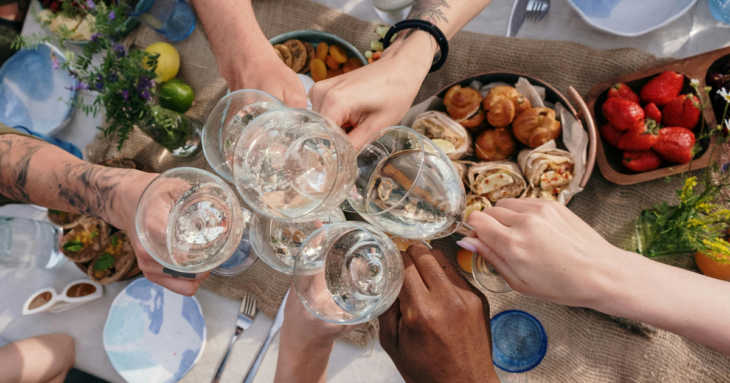Champagne Pairing Guide: Perfect Matches for Every Dish, From Cheeses to Desserts
There’s a quiet kind of magic in the pop of a champagne cork. A little celebration, a little ceremony. For centuries, champagne has held court at weddings, royal feasts, grand openings, and intimate dinners alike. But beyond its effervescence and prestige lies something even more alluring: its remarkable versatility with food.
Champagne deserves more than a fleeting toast. When paired thoughtfully, it has the power to elevate every bite, from a sliver of aged cheese to a decadent dessert. Yet not all pairings are intuitive, and that’s precisely why this guide was crafted—to blend timeless knowledge with fresh insights and help create culinary moments worth remembering.
Understanding Champagne Styles and Flavour Profiles
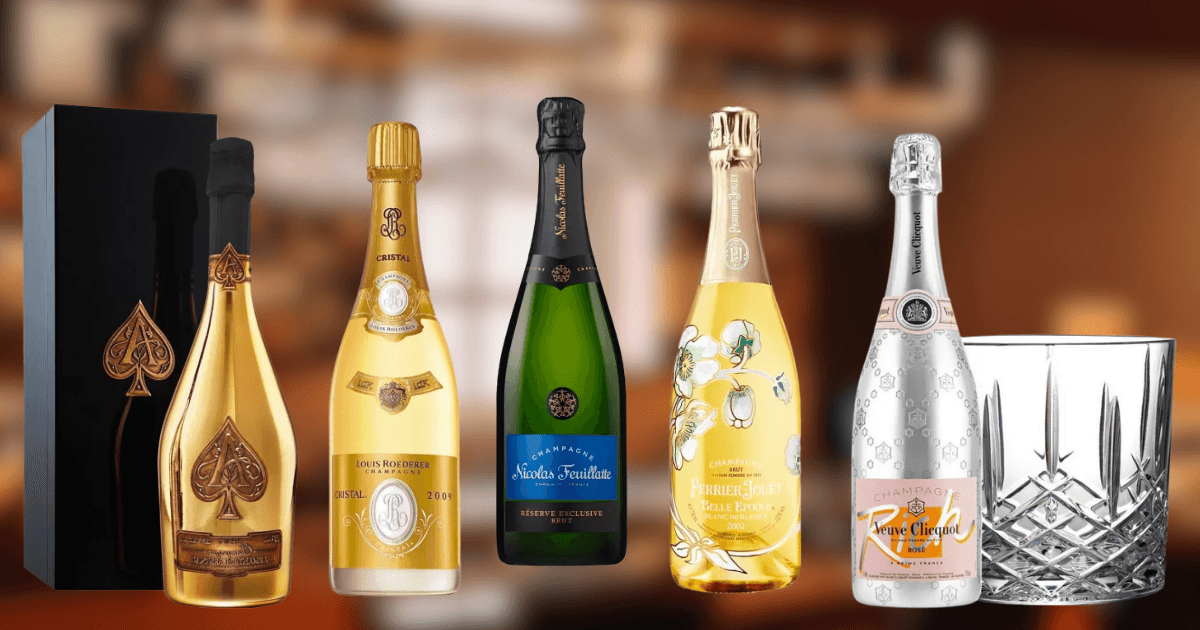
If champagne were a symphony, its styles would be its instruments—each with a distinct voice, capable of harmonizing in unique and expressive ways. To appreciate its full potential, it helps to first understand the nuances that define each style.
Styles of Champagne
Brut Nature & Extra Brut
These are the most austere expressions of champagne, crafted with little to no added sugar. Their bone-dry character is defined by precision, minerality, and an invigorating sharpness that often feels almost architectural. These styles speak in whispers—subtle, restrained, and deeply refined.
Brut
The most widely recognised style, Brut is the balanced middle ground. It offers dryness with a generous embrace—structured acidity softened by notes of citrus, white flowers, and toasted brioche. A true classic, it delivers a poised expression that remains approachable and endlessly sophisticated.
Extra Dry & Sec
Despite their names, these are slightly sweeter than Brut. Extra Dry walks a fine line between freshness and softness, revealing gentle hints of ripe orchard fruits. Sec leans further into the realm of roundness and charm, offering a plush, easygoing style that retains its sparkling backbone.
Demi-Sec & Doux
These richer, more indulgent styles are often misunderstood and therefore underappreciated. Demi-Sec offers a luxurious texture and subtle sweetness, while Doux ventures into a decadent, almost honeyed world of flavor. These styles are expressive and sensual—perfect for those who enjoy complexity with a touch of drama.
Grape Varieties & Their Expression
Beyond sugar levels and dosage, the character of champagne is deeply shaped by the grapes used in its creation. Each variety brings its own rhythm, creating blends—or solo expressions—with distinctive personalities.
Blanc de Blancs (100% Chardonnay)
Pure, focused, and elegantly linear. Blanc de Blancs speaks in a refined, high-pitched register. Expect notes of citrus, chalk, green apple, and white blossom. The mouthfeel is often taught and mineral-driven, revealing a crystalline clarity that lingers on the finish.
Blanc de Noirs (Pinot Noir and/or Pinot Meunier)
Richer in texture and deeper in tone. This style often reveals nuances of red berries, stone fruit, subtle spice, and warm pastry. The presence of black grapes gives it structure, weight, and a gentle fullness that is both grounding and satisfying.
Rosé Champagne
An expressive and often romantic style. Whether created through maceration or the addition of still red wine, Rosé Champagne delights with its signature blush hue and vibrant character. Expect layers of raspberry, cherry, rose petal, and a playful yet structured backbone. Rosé bridges the gap between freshness and intensity with undeniable charm.
The Principles of Pairing Champagne with Food
Pairing isn’t about strict formulas—it’s an art form. Champagne stands apart from still wines due to its effervescence, high acidity, and subtle umami characteristics. These elements influence pairing in four powerful ways:
- Balance Intensity: Lighter champagnes can be overpowered by heavy sauces or bold spices. Match the wine’s body to the food’s richness. A Rosé or Vintage Champagne can hold its own with game, while a delicate Brut might falter.
- Contrast vs. Complement: Opposites attract. Creamy or fatty dishes benefit from champagne’s brisk acidity and fine bubbles. A good example is triple cream cheese with Extra Brut. Conversely, mirror pairings work too—pair citrus-glazed seafood with citrusy Blanc de Blancs to highlight shared notes.
- Acidity Matters: Champagne’s acidity is one of its greatest assets. It slices through oil, fat, and umami, resetting the palate and preparing it for the next bite. Rich dishes like foie gras or tempura come alive when counterbalanced with the right bubbly.
- Texture & Temperature: Temperature of both food and wine plays a role in perception. Chilled champagne can enhance the texture of fried food, making it feel lighter and crisper.
Avoid pairing dry styles with sugary desserts—it will make the champagne seem bitter and the dessert cloying. And don’t underestimate the power of glassware: flutes are elegant, but white wine glasses often reveal more aroma.
Champagne & Cheese Pairings
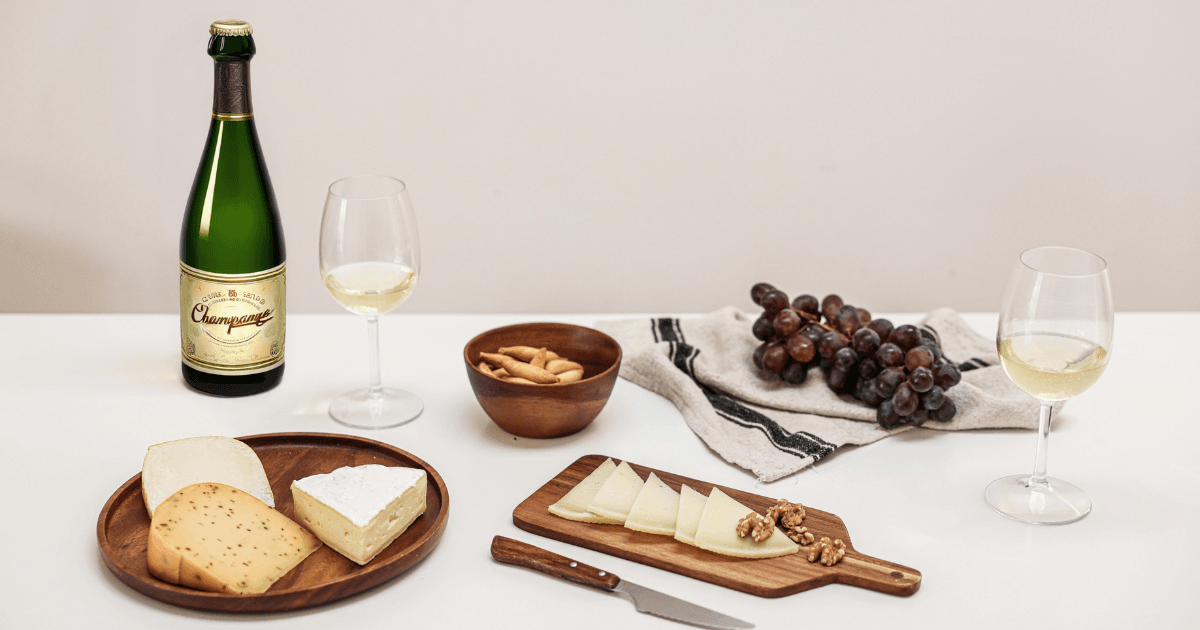
There’s something deeply indulgent about pairing cheese and champagne. The effervescence acts as a palate cleanser, cutting through the cheese’s fat and salt while amplifying its creamy or nutty notes.
| Champagne Style | Cheese | Description |
| Brut | Comté | Aged Comté has a crystalline texture & nutty depth that echoes Brut’s autolytic notes. |
| Blanc de Blancs | Goat Cheese | Light, chalky, & zesty—this classic match highlights both elements’ freshness. |
| Rosé | Manchego | The sharpness & slight oiliness of Manchego plays beautifully with Rosé’s berry notes. |
| Demi-Sec | Gorgonzola Dolce | Sweet, fizzy wine tames the pungency of blue cheese in a harmonious balance. |
Elevate a cheese board with accoutrements: dried apricots, lavender honey, toasted almonds, and crusty baguette. For an evening of tasting, structure the cheese from mild to strong, and pour champagne in the same progression.
Champagne & Appetizers
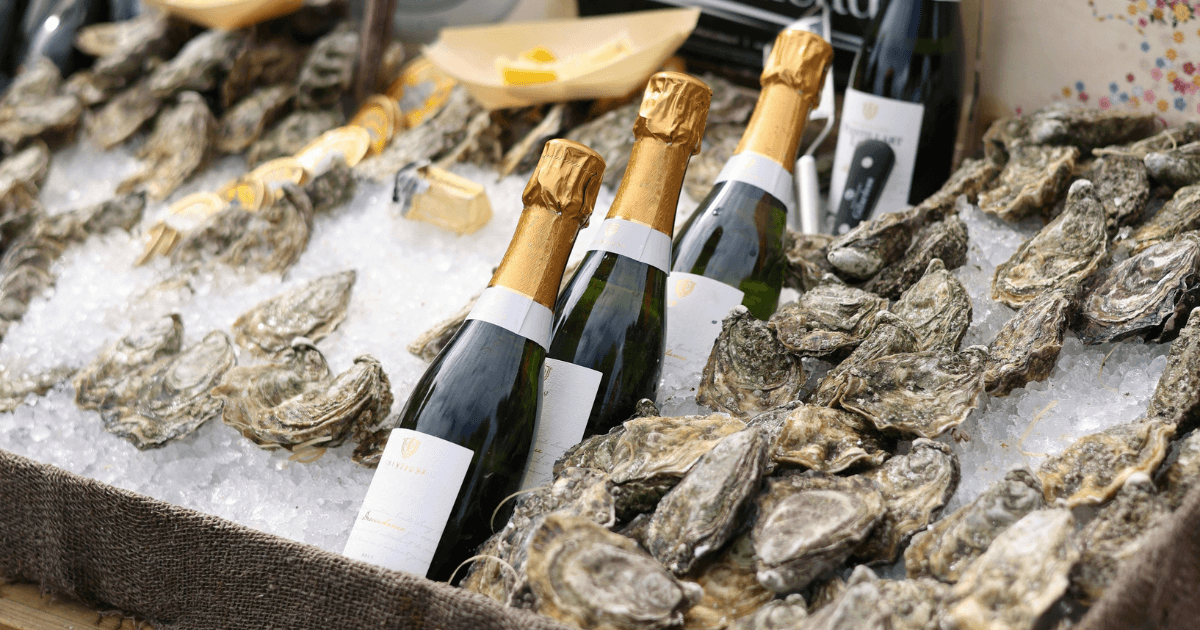
First impressions count. Whether it’s a cocktail party or a multi-course dinner, champagne and appetizers are natural allies.
| Champagne Style | Appetizer | Description |
| Brut | Smoked Salmon & Blinis | The silky texture of salmon & creaminess of crème fraîche get a lift from Brut’s acidity. Add chives or caviar for a luxe touch. |
| Extra Dry | Tempura Asparagus & Zucchini Flowers | The crunch of tempura pairs with the crispness of Extra Dry, creating a contrast in textures that’s refreshing & playful. |
| Brut Nature | Oysters & Yuzu Mignonette | This elevates the brininess of oysters while the citrus note connects to a lean Brut Nature. |
| Rosé Champagne | Mini Korean Pancakes (Pajeon) | With soy dipping sauce & scallions, the umami in this dish is met confidently by Rosé Champagne’s structure & savoriness. |
Other great options include quail eggs with truffle salt, radishes with whipped butter, or small tarts featuring caramelized onion and fig. Each dish is an opportunity to set the tone for the meal to follow.
Champagne & Main Courses
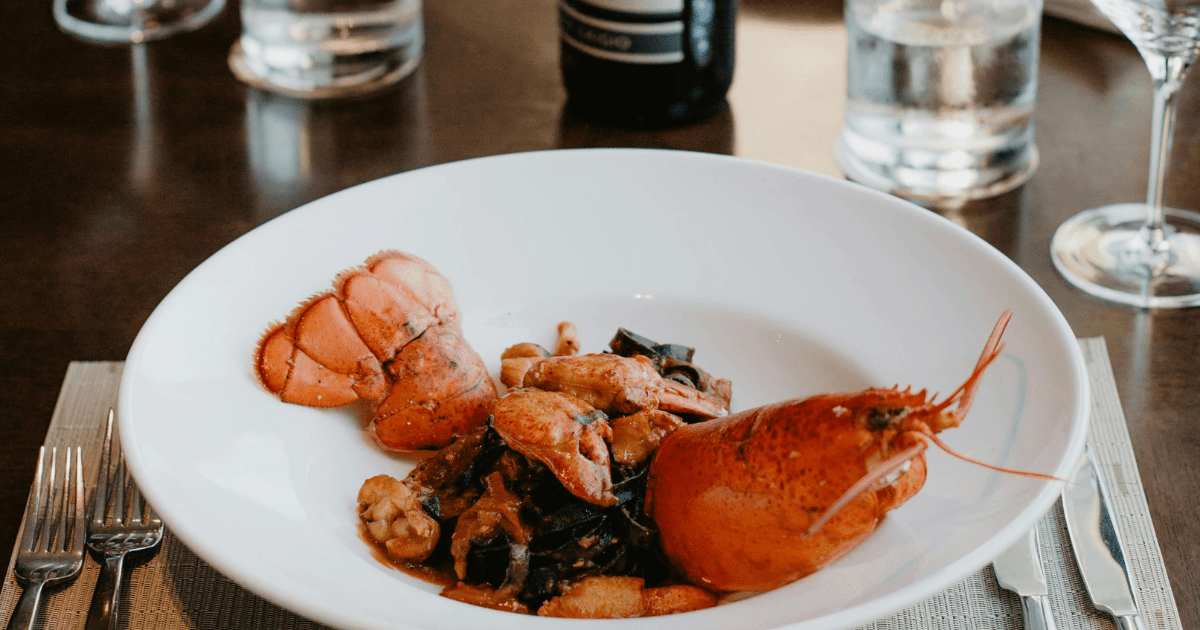
Champagne is often underestimated as a dinner wine. Its versatility can rival many reds and whites—if chosen carefully.
| Champagne Style | Main Courses | Description |
| Blanc de Blancs | Lobster in Beurre Blanc | A rich yet refined dish calls for the bright lift of Blanc de Blancs. The wine balances richness with poise. |
| Rosé | Duck à l’Orange | The fruity sauce and gamey meat beg for the red berry notes and structure of Rosé. |
| Blanc de Noirs | Truffle Pasta (Vegan or Otherwise) | Earthy truffle and creamy textures benefit from the depth of a Blanc de Noirs. This pairing captures complexity and umami in every bite. |
| Brut | Filet Mignon with Porcini Cream | A bold, aged Brut holds up surprisingly well, especially with meaty, umami-laden sauces. |
Unexpected combinations are often the most rewarding. Consider champagne with fried chicken, spicy shrimp tacos, or even creamy Indian curries. The interplay of acid and texture becomes the star of the table.
Champagne & Desserts
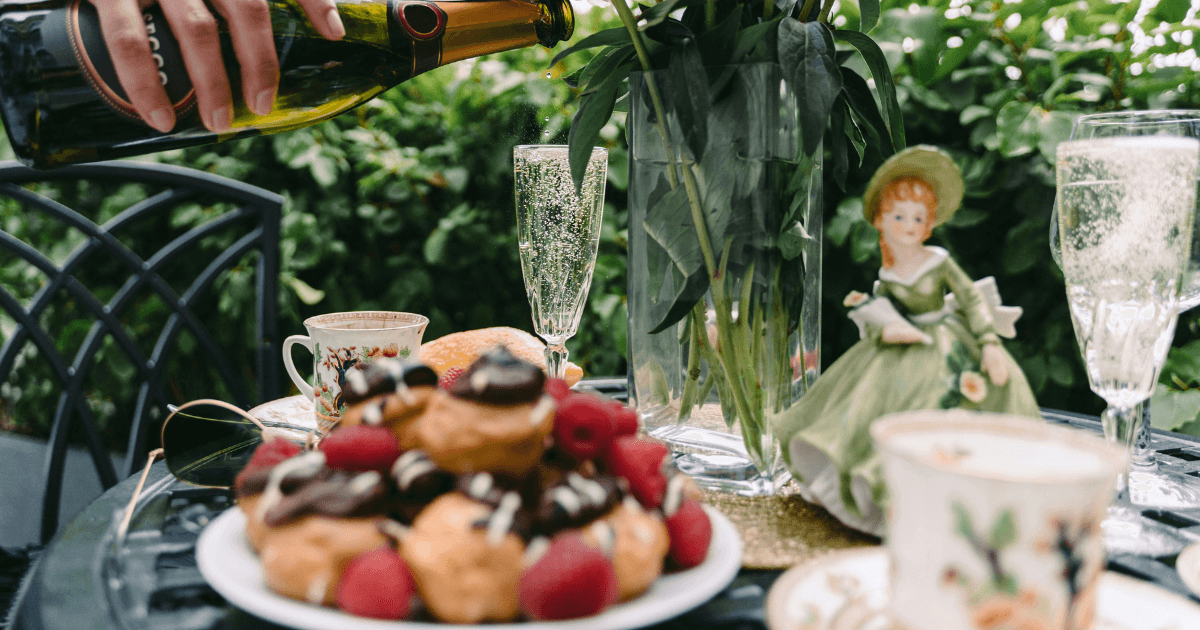
Desserts need delicate handling when paired with champagne. Choose the wrong style and the entire experience turns sour. Choose correctly, and it becomes transcendent.
| Champagne Style | Desserts | Description |
| Demi-Sec | Mille-Feuille | Layer upon layer of pastry, cream, & sugar offset by a soft, sweet sparkle. |
| Rosé | Dark Chocolate Tart | Bitterness from dark chocolate gets tamed by red fruit notes. Add berries or rose petals for an ethereal finish. |
| Blanc de Blancs | Lemon Tart | The vibrant acidity of both tart & champagne creates a zingy, electric pairing. |
| Doux | Macarons | The round texture of Doux fills the palate while the macarons’ almond sweetness remains intact. |
For seasonal pairings, think gingerbread cookies in winter, fresh strawberry galettes in spring, and honeyed stone fruits in summer. Each dessert can reveal a new side of champagne.
Holiday & Special Occasion Pairings
Champagne and celebrations are inseparable. But rather than saving it just for the toast, make it the thread that weaves through the entire menu.
- New Year’s Eve: Start with oysters, caviar, or gougères. Pop open a Brut Nature to mark the turning of time with clarity and elegance.
- Christmas: The richness of turkey, sage, and cranberry benefits from Rosé’s weight and fruit. Pair ginger cookies with Doux for dessert.
- Valentine’s Day: Chocolate-covered cherries, strawberries dipped in ganache—Rosé captures the romance without overwhelming sweetness.
- Weddings & Anniversaries: Small, beautiful bites—caviar-topped potatoes, smoked duck with fig jam—pair effortlessly with Vintage Champagne.
Create a tasting menu with small courses to let different champagnes shine. Add a printed pairing card to make it memorable.
Tips for Hosting a Champagne Pairing Party
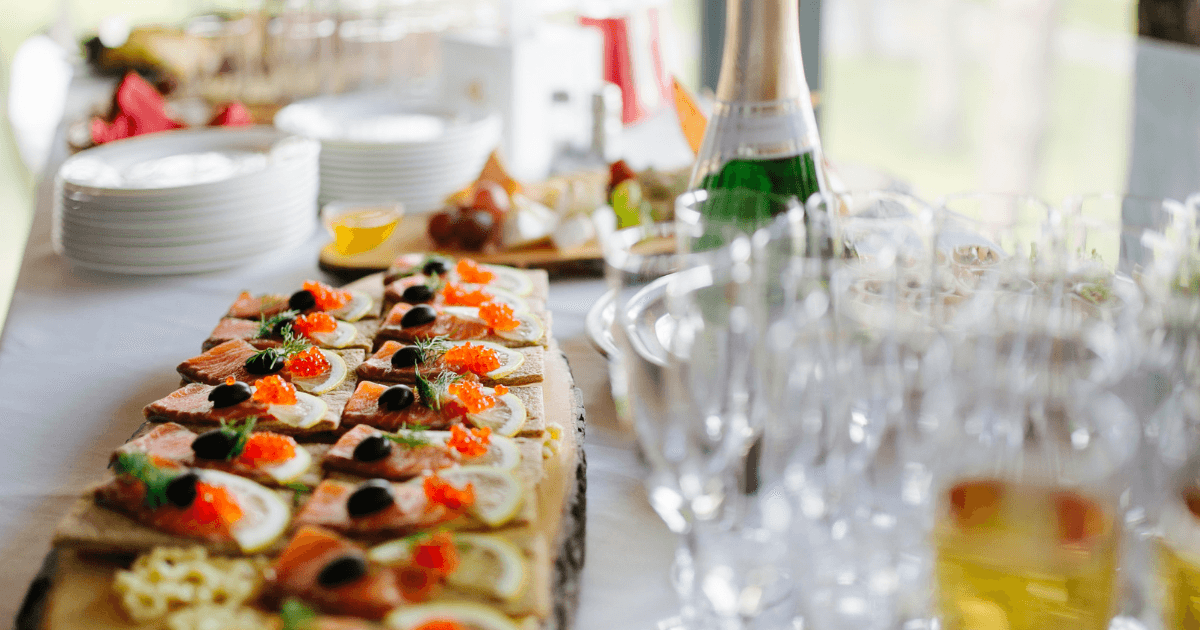
Hosting with champagne is an experience in storytelling. It’s not about perfection—it’s about playfulness and discovery.
- Structure the Tasting: Begin with lighter styles and move toward sweeter, richer ones. Consider offering three to five champagnes with curated bites.
- Glassware Selection: Flutes are iconic but limit aroma. Use tulip-shaped white wine glasses to maximize complexity.
- Temperature Control: Serve between 45–55°F. Keep bottles in an ice bucket with water to maintain temperature.
- Theming the Night: Consider regional pairings, color-themed courses (white, gold, pink), or a dessert-only menu.
Incorporate tasting cards, a blind-pairing challenge, or even sabering for entertainment. The goal is connection—through bubbles, bites, and laughter.
Savor the Sparkle: Elevating Every Bite with Champagne
Champagne is more than a celebratory gesture—it’s an experience that lingers, like a fond memory or a favorite perfume. When paired thoughtfully, it doesn’t just complement your food—it transforms it.
We invite you to take what you’ve learned here and experiment boldly. Whether it’s a backyard brunch or a black-tie affair, let champagne be more than a toast—let it be a thread that weaves flavor, laughter, and story into every gathering.
And if you’re ready to add a little more theatre to your table, consider enhancing the moment with one of our sabers at California Champagne Sabers. Because every bottle deserves a dramatic flourish.
Cheers to the sparkle, the pairing, and the unforgettable.
